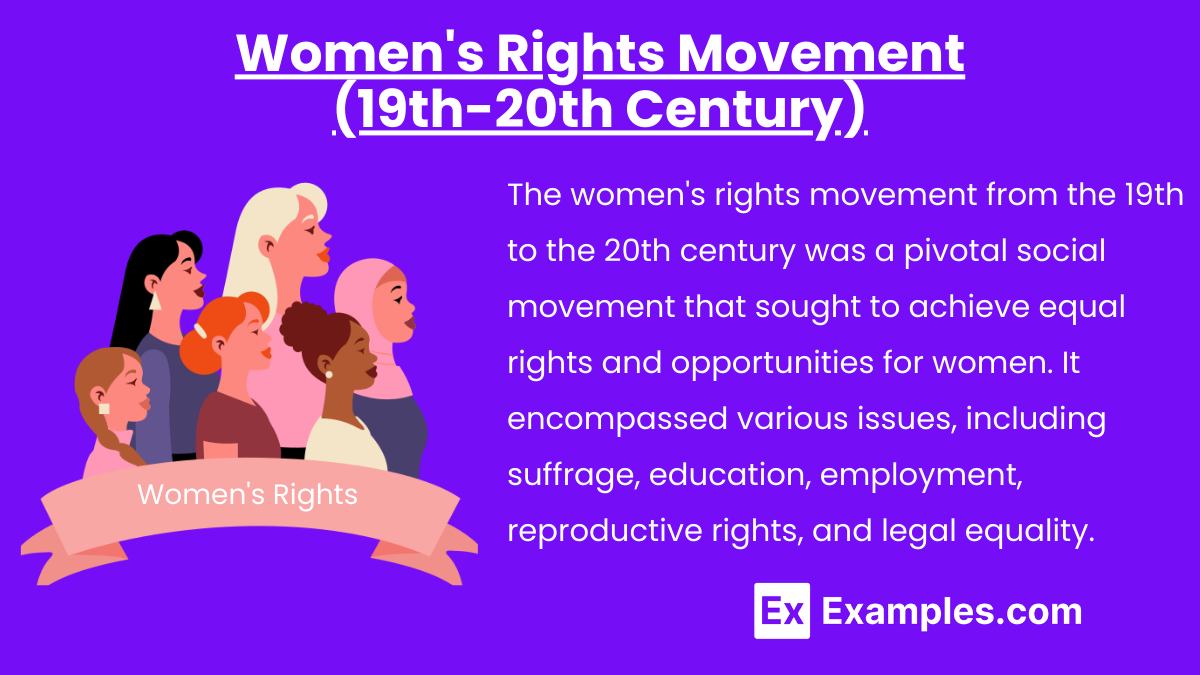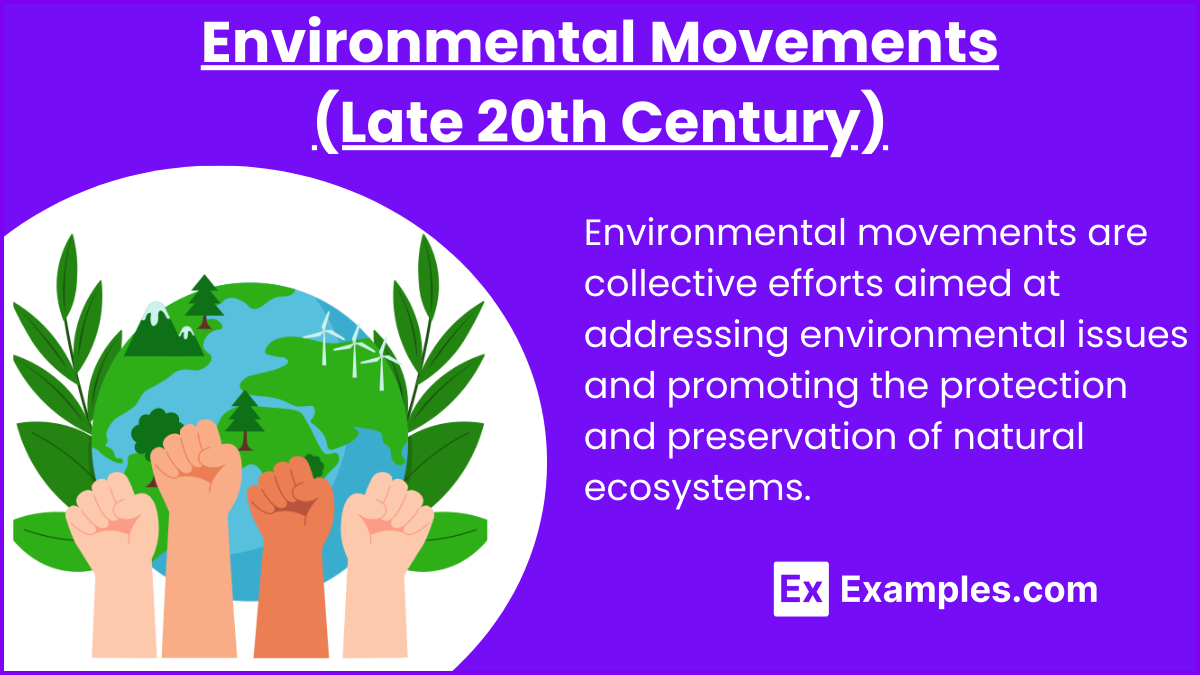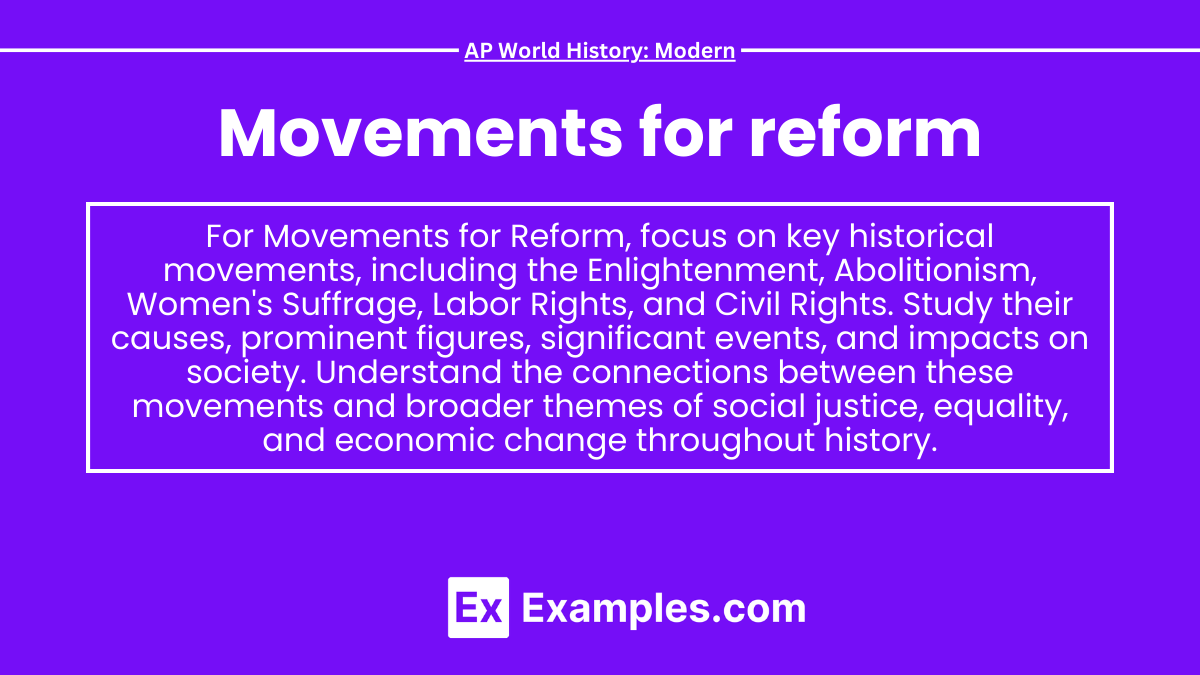Movements for reform have profoundly shaped modern societies by challenging established norms and advocating for rights, justice, and equality. These movements, spanning from the Enlightenment to contemporary environmental activism, reflect the evolving aspirations of individuals and groups seeking to address social, political, and economic inequalities across the globe.
Learning Objective
In studying “Movements for Reform” for AP World History: Modern, you should learn to identify significant reform movements, analyze their motivations and societal impacts, and evaluate the successes and failures of these movements. It’s also important to explore how these movements influenced political ideologies and sparked cultural shifts, providing a nuanced understanding of their role in driving historical change and inspiring future generations.
1. The Enlightenment (17th-18th Century)

- Key Ideas: The Enlightenment was characterized by an emphasis on reason, scientific inquiry, individual rights, and skepticism toward traditional authority and dogma. Thinkers such as John Locke, who proposed the idea of natural rights and government by consent, challenged absolute monarchy. Voltaire advocated for freedom of speech and religious tolerance, while Jean-Jacques Rousseau introduced concepts of the social contract and popular sovereignty.
- Impact: The Enlightenment laid the intellectual foundation for significant political revolutions, including the American Revolution (1776) and the French Revolution (1789). Its principles inspired movements for democracy and human rights across Europe and the Americas, influencing the development of constitutional governments and individual liberties.
2. The Industrial Revolution (18th-19th Century)

The Industrial Revolution was a transformative period that began in the late 18th century and continued into the 19th century, marked by significant advancements in technology, manufacturing, and society.
- Causes: The Industrial Revolution was driven by technological advancements (like the steam engine), urbanization as people moved to cities for factory jobs, and changes in labor practices. It marked a transition from agrarian economies to industrialized ones.
- Reform Movements:
- Labor Movement: As factory conditions were often poor, workers began to organize for better wages, hours, and working conditions. This led to the formation of labor unions, strikes, and the establishment of labor laws aimed at protecting workers’ rights.
- Socialism: In response to the inequalities of industrial capitalism, thinkers like Karl Marx advocated for socialism, which called for collective ownership of the means of production and a redistribution of wealth. The idea gained traction among workers and intellectuals, leading to various socialist movements.
- Impact: The Industrial Revolution transformed economies and societies, shifting economic power from landowners to industrial capitalists. It promoted social justice and led to the emergence of welfare states aimed at addressing the needs of the working class.
3. Abolitionism (19th Century)

- Key Figures: Prominent abolitionists included Frederick Douglass, who escaped slavery and became a powerful orator and writer; advocating tirelessly for justice and equality for all people. His eloquent speeches and writings inspired many to join the fight against slavery and racism.
- Causes: The movement against slavery was influenced by Enlightenment ideals of equality and human rights, as well as economic factors that made slavery less viable. Moral arguments highlighted the inhumanity of slavery.
- Impact: The abolitionist movement successfully led to the end of slavery in various countries, including the United States (1865) and Britain (1833). This laid the groundwork for subsequent civil rights movements, emphasizing the struggle for racial equality.
4. Women’s Rights Movement (19th-20th Century)

The women’s rights movement from the 19th to the 20th century was a pivotal social movement that sought to achieve equal rights and opportunities for women. It encompassed various issues, including suffrage, education, employment, reproductive rights, and legal equality. Here’s an overview of its key phases and milestones:
- Key Figures: Leaders such as Elizabeth Cady Stanton and Susan B. Anthony in the U.S. organized the Seneca Falls Convention in 1848, demanding women’s suffrage and equality. Emmeline Pankhurst was a key figure in the British suffragette movement, known for her militant tactics.
- Goals: The movement aimed to secure women’s rights, including suffrage, access to education, and property rights. It sought to challenge societal norms and advocate for women’s roles in public life.
- Impact: Achievements included the right to vote in many countries (e.g., the 19th Amendment in the U.S. in 1920), which significantly influenced later gender equality movements and policies.
5. Environmental Movements (Late 20th Century)

Environmental movements are collective efforts aimed at addressing environmental issues and promoting the protection and preservation of natural ecosystems. These movements often advocate for policy changes, raise public awareness, and mobilize communities to take action.
- Causes: Growing awareness of industrial pollution, the environmental degradation caused by rapid industrialization, and climate change prompted calls for action. The publication of works like Rachel Carson’s “Silent Spring” in 1962 raised awareness about the impact of pesticides and pollution.
- Impact: The environmental movement led to a global consciousness about sustainability and environmental protection. It resulted in significant legislation (e.g., the Clean Air Act in the U.S.), international treaties (e.g., the Kyoto Protocol), and grassroots activism aimed at preserving ecosystems and combating climate change.
Examples
Example 1: Labor Movement
Workers organized to demand better wages and working conditions, leading to the establishment of labor unions and labor rights laws.
Example 2: Civil Rights Movement
Aimed to end racial discrimination and secure equal rights for African Americans, resulting in landmark legislation like the Civil Rights Act.
Example 3: LGBTQ+ Rights Movement
Advocated for equal rights and acceptance of LGBTQ+ individuals, leading to significant legal reforms, including marriage equality.
Example 4: Anti-Colonial Movements
Colonized nations sought independence from imperial powers, promoting self-determination and national identity across Africa, Asia, and the Caribbean.
Example 5: Suffrage Movement
Fought for women’s right to vote, culminating in legal changes that granted voting rights to women in various countries.
MCQs
Question 1:
Which movement aimed to end racial segregation and discrimination in the United States during the mid-20th century?
A) Labor Movement
B) Civil Rights Movement
C) Women’s Rights Movement
D) Abolitionist Movement
Correct Answer: B) Civil Rights Movement
Explanation: The Civil Rights Movement fought for equal rights and ended racial discrimination, achieving significant legal changes like the Civil Rights Act.
Question 2:
What was the primary goal of the Women’s Suffrage Movement in the late 19th and early 20th centuries?
A) Achieving equal pay for equal work
B) Securing the right to vote for women
C) Accessing higher education
D) Promoting labor rights for women
Answer: B) Securing the right to vote for women
Explanation: The Women’s Suffrage Movement sought voting rights, culminating in the 19th Amendment, which granted women the right to vote.
Question 3:
What was a major impact of the Abolitionist Movement in the 19th century?
A) The establishment of labor unions
B) The end of colonial rule
C) The abolition of slavery
D) The expansion of women’s rights
Answer: C) The abolition of slavery
Explanation: The Abolitionist Movement aimed to end slavery, leading to significant legal reforms and the eventual emancipation of enslaved people.


